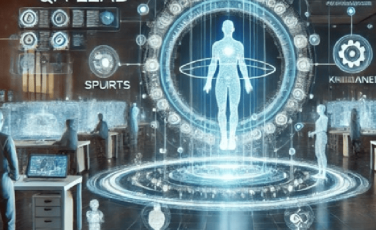Not long ago, I came across a news report about recruitment in China that highlighted the contribution of AI in facilitating the initial interviews.
The latter explained that for certain positions, thousands of CVs being sent, the first sorting was done using algorithms. This is a fairly standard practice that is becoming increasingly common, but what struck me was that the second screening was also carried out by an AI. How did it work? In concrete terms, the candidate is faced with a screen displaying a neutral face that asks questions, just as a recruiter would during a video interview. The approach was presented as ‘fair’ because it does not depend on the recruiter’s sensitivity and subjectivity. Each candidate is thus assessed in the same way, without mood, timing or the person being able to influence the choice. And all with emotion analysis as a bonus.
Basically, it’s an interesting thought, which even makes sense, but it made me wonder. After all, economies of scale, fairness, process improvement, that’s what we expect from AI. But if we draw the line a little, it could end up recruiting autonomously, even conducting annual interviews and, why not, if we go even further, managing people. But what about the human aspect in all this? Indeed, the scaling of recurring, mechanical tasks is now omnipresent: automation of the management of letters, emails, etc. In that case, we are talking about identifying a person with whom we are going to work on a daily basis, with whom a feeling must be established and where the informal and the emotional seem essential to me.
The underlying question that came to me is therefore: Is it possible to complement artificial intelligence with emotional intelligence?
But how does it work?
Let’s take the example of recruitment. The first step is to analyse the multitude of CVs that the company receives. CVs, although sometimes original, are in most cases ‘stereotypical’: presentation of different skills, experiences, keywords. A recruiter spends about 53 seconds analysing a CV (1). It is clear that the use of NLP algorithms and keyword (or other) searches will easily and very effectively replace a recruiter searching for skills and a somewhat random career path in a profile database. We are in the process of scaling up a mechanical task.
Once this first batch of candidates has been selected, comes the exchange phase with those who have been selected to detail their background, their motivation, their understanding of the job’s challenges, their suitability to the company’s values and to test their reactions. This is a task that takes between 30 minutes and 1 hour 30 minutes(2) (presentation of the company and the job, discussion on how the job will be carried out, etc.). This phase is generally followed by one or more sequences with a small panel of candidates to make the final choice. It is therefore clearly worthwhile trying to reduce this second stage of selection of the ‘crème de la crème’ if you want to optimise recruitment.
However, there is a whole range of nuances between sorting CVs and capturing emotions. Sorting CVs involves classic text processing techniques. Some companies use AI to capture emotions in words by observing word repetitions, sentence structures and even the form of the email.
But here, it’s a question of going further: while it is one thing to understand and interpret words, it is quite another to know how to identify emotions during a real-time interview. We are clearly entering the realm of Emotional Intelligence.
This field is in full development. Indeed, society is increasingly centred on feelings and emotions. The aim is therefore to develop AIs that decode them.
As with NLP analysis, data is needed here. What becomes complex is to mix many typologies of data that can come from different sensors: video, microphone and biometrics.
- Voice data, which makes it possible to capture emotions from your voice, in particular through tonality, speed and hesitations
- Body language and more specifically micro-expressions on the face





